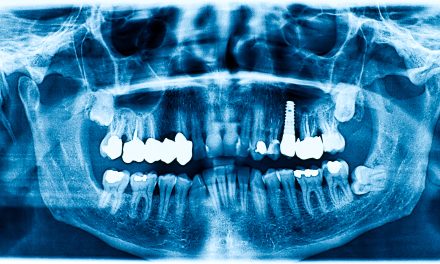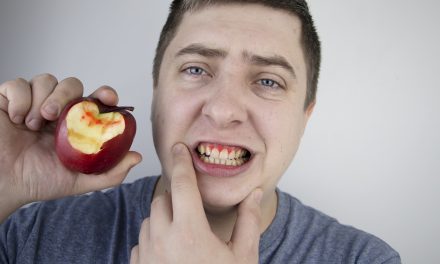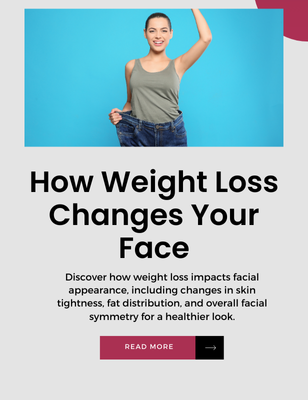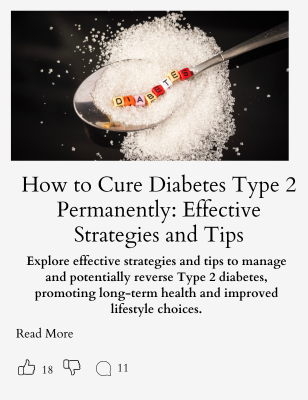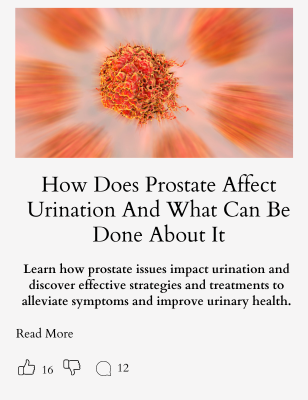Keeping teeth white with braces can be challenging, but it’s not impossible. Combining an excellent oral hygiene routine with natural methods can make a big difference. Simple adjustments in daily practices can lead to a brighter smile.
Natural agents like baking soda and hydrogen peroxide can be effective options. Brushing your teeth with a mixture of baking soda and water can help remove surface stains. Rinsing with a diluted hydrogen peroxide solution can also whiten teeth naturally, though it’s essential not to overuse it to avoid gum irritation.
Maintaining a balanced diet that limits foods and drinks that stain teeth, such as coffee and tea, can support your whitening efforts. Regular dental check-ups can help identify staining problems early and provide professional advice.
Key Takeaways
- Natural whitening agents like baking soda can be effective.
- Consistent oral hygiene and avoiding stain-causing foods are crucial.
- Regular dental visits help maintain tooth whiteness during treatment.
Understanding Teeth Whitening with Braces
Teeth whitening can be more challenging with braces, but it is possible. The key is to use safe and effective methods.
Why It’s Important:
Braces can trap food and plaque, leading to discoloration. Keeping teeth white will help maintain overall dental health.
Methods to Whiten Teeth with Braces:
- Brushing: Use a toothbrush with soft bristles. Brush at least twice a day using the proper technique.
- Flossing: Flossing daily is vital. It helps reduce plaque, which can keep teeth white and healthy. Consider using a water pick if traditional flossing is brutal. Here are some tips for flossing with braces.
- Whitening Toothpaste: Choose a whitening toothpaste that is gentle on braces. Look for products with the ADA Seal of Acceptance.
- Whitening Mouthwash: Use a mouthwash that helps remove surface stains. Opt for a formula that won’t irritate gums.
What to Avoid:
Avoid abrasive whitening toothpastes and mouthwashes, as they may damage braces. Also, avoid chewing gum, sticky candies, and tobacco products, as these can lead to severe discoloration and damage to braces. More on what to avoid.
Other Tips:
- Stay Hydrated: Drinking water helps wash away food particles and reduces plaque buildup.
- Healthy Diet: Eat foods less likely to cause stains, like apples or carrots.
Professional whitening treatments may be considered once braces are removed. Talk to your orthodontist for personalized advice.
Natural Whitening Agents
People with braces can still achieve a brighter smile using natural whitening methods. Here, we’ll explore three popular and effective agents: baking soda, hydrogen peroxide, and fruit peels.
Baking Soda
Baking soda is known for its mild abrasive properties. It helps remove surface stains from teeth without damaging the enamel. Mix a small amount (about a teaspoon) with water to create a paste. Brush your teeth with this paste using a soft-bristled toothbrush, focusing on areas around the brackets and wires.
To prevent enamel erosion, it’s best to use this method sparingly, about once or twice a week. Baking soda is also alkaline, which can help neutralize acids in the mouth, reducing the risk of tooth decay.
Always rinse thoroughly after brushing to remove any residue. Many commercial toothpastes also include baking soda for its whitening effects, making it a versatile choice for people with braces.
Hydrogen Peroxide
Due to its bleaching properties, hydrogen peroxide is a common ingredient in many teeth-whitening products. Mix a small amount (about a tablespoon) of 3% hydrogen peroxide with water to use it naturally. Swish the solution in your mouth for about a minute before spitting it out.
Be cautious not to swallow hydrogen peroxide. After rinsing, brush your teeth as usual. For visible results, do this a few times a week. Hydrogen peroxide whitens teeth and kills bacteria, promoting oral health.
It’s essential to use a lower concentration to avoid irritation of the gums, especially with braces, which can make some mouth areas more sensitive.
Fruit Peels
Certain fruit peels, such as bananas, oranges, and lemons, contain natural acids and compounds that can help whiten teeth. Rub the inside of the peel directly onto your teeth for a few minutes. Bananas, for instance, contain potassium, magnesium, and manganese, which can remove stains.
After rubbing, wait about 10 minutes before brushing your teeth. This allows the minerals to penetrate the enamel. This method is gentle and safe for use a few times a week.
However, it’s important to rinse thoroughly and not overuse acidic fruit peels, as too much acidity can harm enamel over time. This natural remedy is beneficial for maintaining the whiteness of teeth with braces.
Daily Oral Hygiene Habits
Daily oral care is crucial for whitening teeth with braces. Maintaining clean teeth and gums prevents plaque build-up and discoloration. This section addresses brushing, flossing, and rinsing techniques tailored for those with braces.
Proper Brushing Techniques
Brushing with braces requires extra attention. Use a soft-bristle toothbrush to avoid damaging the brackets. A fluoride toothpaste is recommended to strengthen the enamel and prevent cavities.
Brush twice a day for at least two minutes. Angle the brush at 45 degrees to clean around the brackets thoroughly. Use gentle, circular motions to cover all surfaces, including the teeth’ front, back, and chewing surfaces.
An interdental brush can reach areas around brackets and wires. Electric toothbrushes with orthodontic heads are also beneficial for effective cleaning. Regularly inspect the braces and teeth for any food particles or plaque build-up.
Flossing with Braces
Flossing with braces can be challenging but is essential for removing plaque and food debris. Use a floss threader or special orthodontic floss to navigate around the wires.
Start by inserting the floss under the main wire. Gently move the floss up and down between the teeth. Be careful not to snap the floss, which can damage the gums. Repeat this process for each pair of teeth.
Water picks or oral irrigators are helpful alternatives. They use a stream of water to clean between teeth and around braces. These devices are easy to use and more effective than traditional flossing for some people.
Rinsing with Natural Mouthwashes
Rinsing with a natural mouthwash helps maintain oral hygiene and keeps the breath fresh. Homemade mouthwashes using salt water or a mix of water and baking soda can reduce bacteria and neutralize acids.
Coconut oil pulling is another natural method. Swish a tablespoon of coconut oil in your mouth for 10-15 minutes, and pull the oil through your teeth. This method claims to reduce plaque and bacteria, promoting whiter teeth.
Avoid mouthwashes with alcohol, as they can cause dryness and irritation. Instead, opt for products containing natural ingredients like tea tree oil or aloe vera, which have antibacterial properties. For the best results, use the mouthwash after brushing and flossing.
Dietary Considerations for Whiter Teeth
A balanced diet is essential for maintaining white teeth, especially if you have braces. Certain foods can stain teeth, while others help keep them strong and bright.
Foods to Avoid
Certain foods and beverages can lead to stained teeth. Due to their dark pigments, coffee, tea, and red wine are significant culprits. Sugary snacks and drinks can promote plaque buildup, which may lead to discoloration.
Dark berries like blueberries and blackberries can also stain teeth. Acidic foods and drinks like citrus fruits and soda can erode enamel, making teeth more susceptible to staining.
Tomato sauce, curry, and balsamic vinegar can also contribute to teeth staining. Sticky foods like caramel can get caught in braces, increasing the risk of tooth decay and stains.
Teeth-Healthy Foods
Eating a diet rich in particular nutrients can help maintain whiter teeth. Dairy products, such as yogurt, milk, and cheese, are high in calcium, strengthening enamel. Crunchy fruits and vegetables, like apples, carrots, and celery, can help scrub teeth clean as you chew.
Leafy greens like spinach and kale are high in vitamins and minerals that promote dental health. Nuts and seeds can provide essential nutrients like phosphorus and calcium. Drinking plenty of water helps rinse away food particles and bacteria, reducing the risk of plaque buildup.
Including these teeth-healthy foods in your diet can support oral health, especially when wearing braces.
Regular Dental Check-Ups
Regular dental check-ups are essential to keep your teeth white while wearing braces. Dentists can catch issues early and help maintain oral health.
Dentists often perform professional cleanings during these visits. This removes plaque and tartar that brushing might miss. Keeping your teeth clean can prevent staining and discoloration.
Benefits of Regular Check-Ups:
- Detect early signs of cavities.
- Professional cleaning.
- Advice tailored to your needs.
How Often to Visit:
- It is recommended to visit your dentist every six months. Adjustments might be needed based on individual circumstances.
These check-ups offer a chance to discuss whitening methods. Your dentist can suggest safe and effective products to use with braces.
Keeping Track:
- Mark appointments on a calendar.
- Set reminders on your phone.
Staying consistent with appointments ensures that any potential issues are addressed promptly. Regular dental check-ups support a brighter, healthier smile while wearing braces.
Home Remedies to Avoid
When trying to whiten teeth with braces, some home remedies may not be suitable. Here are a few that should be avoided:
Oil Pulling
Some people claim oil pulling helps whiten teeth. It involves swishing oil, like coconut oil, in the mouth. While it may have some benefits, its effectiveness in whitening teeth is questionable, especially with braces.
Lemon Juice
Lemon juice is acidic and can erode enamel. Using it to whiten teeth can damage the surface, making it more susceptible to cavities and sensitivity. This can be particularly harmful if you have braces.
Baking Soda
Brushing with baking soda can be too abrasive. It can wear down enamel over time. With braces, it may also lead to uneven whitening, leaving noticeable marks once the braces are removed.
Hydrogen Peroxide
Hydrogen peroxide can irritate the gums and soft tissues in the mouth. For those with braces, it can also cause discoloration by affecting the metal components.
Avoiding these methods can help maintain the health of your teeth while you have braces. Always consult with a dental professional before trying any whitening treatments.
Orthodontic Tools for Cleaning
Maintaining good oral hygiene with braces can be challenging, but using the right tools can make a big difference.
Toothbrushes: It is essential to use a toothbrush that can reach all the surfaces of your teeth and braces. Electric toothbrushes can be very effective because they provide thorough cleaning with less effort.
Flossing Tools: Regular flossing is essential, but it can be difficult with braces. Threader floss and water picks can help. Threader floss is designed to get between the wires and teeth, while water picks use water to remove food particles and plaque.
Mouthwash: Adding an antiseptic mouthwash to your routine can help reduce plaque buildup and bacteria in areas that are hard to reach with brushing and flossing alone.
Interdental Brushes: These small brushes can fit between braces and wires, making it easier to clean these tight spaces. They are perfect for removing plaque and food particles that regular toothbrushes might miss.
Here is a table summarizing some common tools:
| Tool | Description |
|---|---|
| Electric Toothbrush | Provides thorough cleaning with less effort |
| Threader Floss | Designed to reach between braces and teeth |
| Water Pick | It uses a water stream to remove food particles and plaque |
| Antiseptic Mouthwash | Reduces plaque buildup and bacteria |
| Interdental Brush | Fits between braces and wires for easy cleaning |
Combining these tools can help ensure your teeth and braces stay clean and healthy throughout your orthodontic treatment.
You can check out resources like this article or this guide for more tips and information.
Professional Whitening Options
Once braces come off, professional whitening options are available for those with them. These methods offer reliable and effective results.
In-Office Whitening:
Professional treatments at a dental office use powerful bleaching agents. A dentist may apply a protective gel to the gums before using a high-concentration hydrogen peroxide solution. This method is quick and shows significant improvement in one or two sessions.
Custom Whitening Trays:
Dentists can provide customized trays fitted to the patient’s teeth. The patient uses these trays with a professional-grade whitening gel at home. The trays ensure even application, which helps achieve uniform results.
Laser Whitening:
Laser whitening involves applying a bleaching agent followed by using a laser to speed up the whitening process. This method can enhance the bleaching agent’s results, making the teeth several shades lighter in a single visit.
| Method | Duration | Effectiveness | Cost |
|---|---|---|---|
| In-Office Whitening | 1-2 sessions | High | Expensive |
| Custom Trays | Several weeks | Moderate to High | Moderate |
| Laser Whitening | 1 session | Very High | Very Expensive |
These professional whitening options are recommended due to their safety and effectiveness. For more detailed information, read about professional treatments.
The Role of Saliva in Teeth Whitening
Saliva plays a crucial role in maintaining oral health and supporting teeth whitening. It contains important enzymes and proteins that help break down food particles and wash away debris.
Benefits of Saliva:
- Natural Cleansing: Saliva helps remove food particles and bacteria from the mouth. This reduces the risk of staining and discoloration.
- Acid Neutralization: Saliva neutralizes acidic foods and drinks. This prevents enamel erosion, which can make teeth appear yellow.
- Moisture Maintenance: It keeps the mouth moist, preventing dryness that can lead to plaque buildup.
Components of Saliva:
- Enzymes: These help break down food and clean the teeth.
- Proteins: Proteins in saliva protect against harmful bacteria.
- Minerals: Saliva contains calcium and phosphate, which help remineralize and strengthen teeth.
Saliva Flow:
- Stimulated Saliva: Produced when eating or chewing. This type is more prosperous in enzymes and helps clean teeth more effectively.
- Unstimulated Saliva: Produced when not eating or chewing. It provides a baseline level of protection and moisture.
Improving Saliva Flow:
- Chewing Sugar-Free Gum: Stimulates saliva production. It helps clean teeth and freshen breath.
- Staying Hydrated: Drinking water maintains saliva flow and keeps the mouth clean.
Individuals with braces can enhance their natural teeth whitening efforts by understanding and supporting the role of saliva.
Preventing Teeth Stains During Orthodontic Treatment
Keeping teeth clean during orthodontic treatment is essential. Brushing thoroughly after every meal can prevent plaque buildup. Use a soft-bristle toothbrush and fluoride toothpaste for effective cleaning. An electric toothbrush with an orthodontic head may also be helpful.
Regular flossing is vital in preventing stains. Special floss threaders for braces can help get into the tight spaces that regular floss can’t reach. They are specifically designed to maneuver around the wires and brackets.
Incorporate whitening toothpaste and mouthwash into your routine. Products with fluoride can strengthen enamel and remove surface stains. As Smart Orthodontics notes, be cautious to avoid abrasive products that might damage braces.
Avoid foods and drinks that can stain teeth. Items like coffee, tea, red wine, and soda can cause discoloration. If these beverages are consumed, it’s best to rinse the mouth with water immediately afterward.
Regular dental cleanings are crucial. Professional cleanings can remove plaque and tartar, often responsible for tooth stains. This advice aligns with recommendations from Colgate.
Chewing sugar-free gum can also help. It stimulates saliva production, naturally cleansing the mouth and reducing plaque buildup.
For those who smoke or use tobacco products, quitting can significantly reduce the risk of teeth stains. Tobacco is a major cause of tooth discoloration and other oral health issues.
Following these steps can maintain brighter, healthier teeth even while wearing braces, ensuring a confident smile once the orthodontic treatment is complete.
After Braces Care for Maintained Whiteness
Following a few simple steps can help keep teeth bright after braces. These can help prevent staining and maintain a healthy, white smile.
Brush Regularly
She should brush her teeth at least twice a day using fluoride toothpaste. This helps to remove surface stains and prevent new ones from forming.
Floss Daily
Flossing every day is essential to remove plaque from between the teeth. This can help to prevent discoloration and keep teeth looking their best.
Use a Whitening Toothpaste
Whitening toothpastes contain mild abrasives and chemicals that remove surface stains. They are a good option for keeping teeth white without harsher treatments.
Avoid Staining Foods and Drinks
It’s best to avoid foods and drinks that can cause stains, such as coffee, tea, and red wine. If consumed, she should rinse her mouth with water afterward.
Stay Hydrated
Drinking plenty of water can help to wash away food particles and reduce the risk of stains. It also promotes overall oral health.
Regular Dental Visits
Regular check-ups and cleanings with her dentist ensure that any potential issues are caught early. Professional cleanings can also help to remove any built-up stains.
| Care Tip | Action |
|---|---|
| Brush Regularly | At least twice daily with fluoride toothpaste |
| Floss Daily | Removes plaque and prevents discoloration |
| Use Whitening Toothpaste | Removes surface stains |
| Avoid Staining Foods/Drinks | Limit coffee, tea, and red wine consumption |
| Stay Hydrated | Drink lots of water |
| Regular Dental Visits | Professional cleanings and check-ups |
Following these tips, teeth can stay bright and white after removing braces.
Frequently Asked Questions
Whitening teeth with braces can be challenging, but several methods and precautions can help achieve a brighter smile without damaging the braces.
What are the best methods for whitening teeth with braces?
Using whitening toothpaste, regular flossing, and a water pick effectively reduces stains. Whitening toothpastes contain gentle polishing agents and can be used daily. Flossing and water picks help to remove plaque and food particles that might contribute to discoloration.
Can baking soda be utilized for teeth whitening if I have braces?
Baking soda can be used for teeth whitening, even with braces. It acts as a mild abrasive that helps remove surface stains. A baking soda and water paste can be applied to the teeth, but it should be used sparingly to avoid damaging the enamel or braces.
Is it possible to safely use whitening toothpaste while wearing braces?
Yes, whitening toothpaste is generally safe to use with braces. It contains low concentrations of chemical whiteners and gentle polishing agents that can lift stains from the teeth. Brushing at least twice daily is important to maintain oral hygiene and prevent staining.
How do you remove yellow stains from teeth when you have braces?
Yellow stains can be combated by brushing with whitening toothpaste and using a water pick to clean hard-to-reach areas. Regular flossing also helps to remove plaque that could cause yellowing. Consistent oral hygiene is key to preventing and reducing yellow stains.
Are whitening strips a viable option for people with braces?
Whitening strips are not recommended for people with braces. They do not adhere well to the brackets and could cause uneven whitening. Instead, whitening toothpaste and maintaining good oral hygiene is a better approach.
What precautions should be taken when using hydrogen peroxide for teeth whitening with braces?
Hydrogen peroxide can be used in low concentrations for teeth whitening, but caution is necessary. It should be applied with care to avoid contact with the braces and gums, which could irritate. Before trying this method, it is advisable to use a diluted hydrogen peroxide solution or consult with a dentist.










